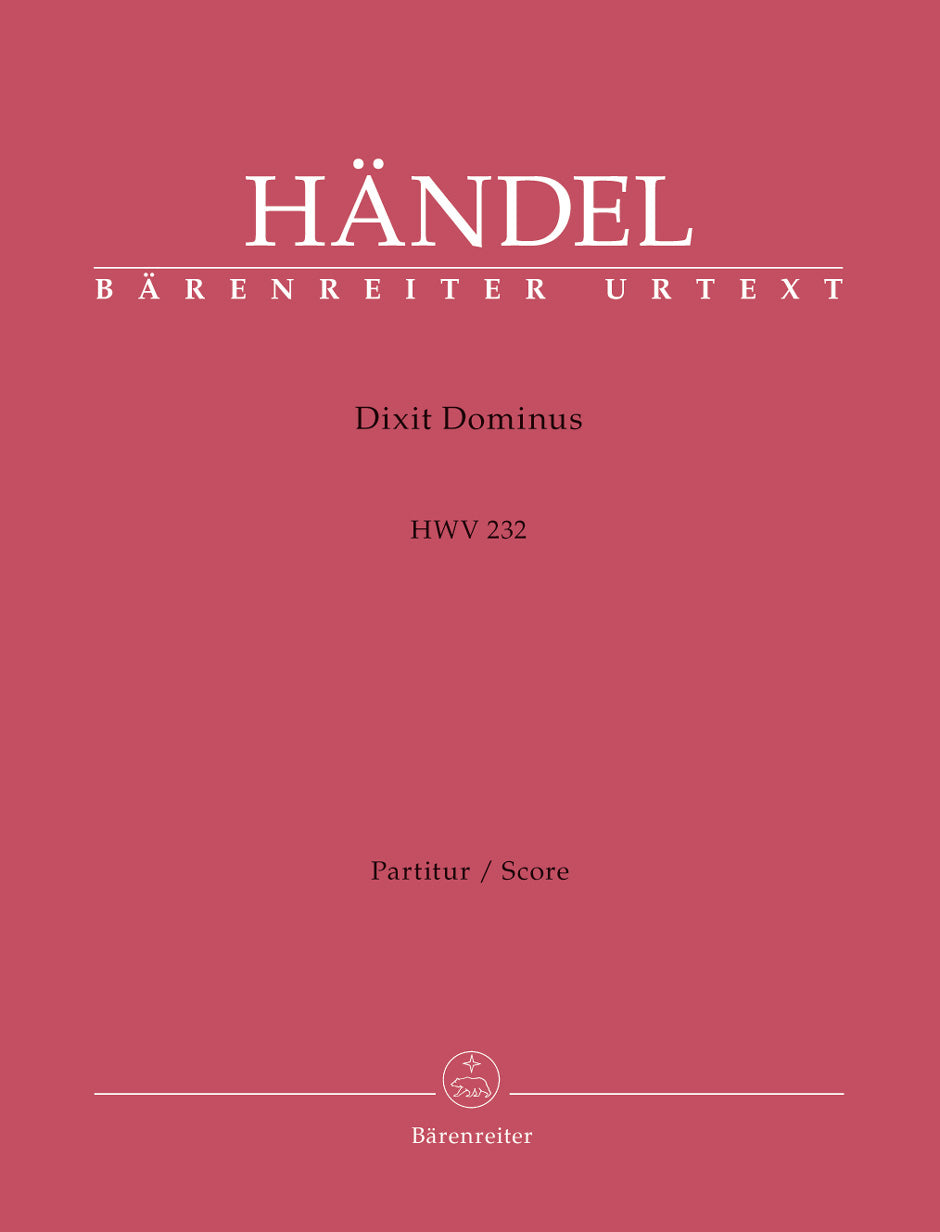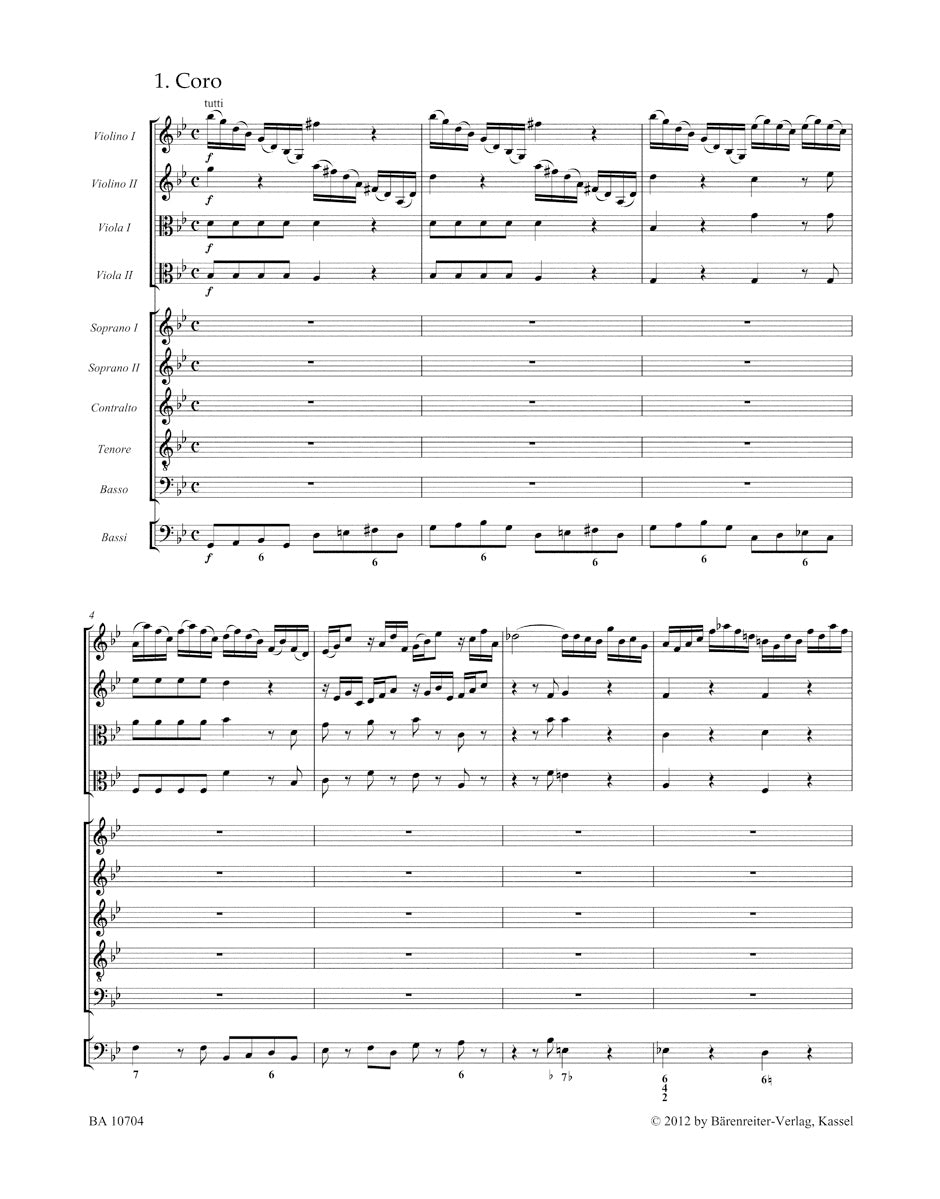


BARENREITER - 345062
Handel Dixit Dominus HWV 232 (Psalm 109)
Composer: Frideric Handel George
Publisher: Bärenreiter
Format: Full Score
Binding: Paperback
Dimensions: 12.2 in x 9.6 in
Pages: 88
Handel Dixit Dominus HWV 232 (Psalm 109)
Juilliard Store
144 West 66th Street
New York NY 10023
United States
Choose options
Handel Dixit Dominus HWV 232 (Psalm 109)
Juilliard Store
144 West 66th Street
New York NY 10023
United States
Handel Dixit Dominus HWV 232 (Psalm 109)
Juilliard Store
144 West 66th Street
New York NY 10023
United States
Editor: Marx, Hans Joachim
Orchestral scoring : 2SSolo/ASolo/TSolo/BSolo/Mixed choir:SSATB/2V/2Va/Vc/Bassi(Vc/double bass/Org)
Language(s) of work: L
Language(s) of text: L
Product format: score, Urtext edition
Binding: Paperback
Pages / Format: XVIII, 88 - 31,0 x 24,3 cm
The first Urtext edition BA 4002 based on the “Halle Handel Edition” was published in 1960. At that time no critical commentary was published so that in cases of doubt, the basis on which editorial decisions were made was not officially recorded. A new complete edition volume (BA 10704/01), due to be published in 2013 will include a detailed foreword providing information on the genesis and the first performance of this work as well as information on the psalm on which this work is based and on performance practice. In addition several facsimiles pages will be included, giving a view into the source material. The critical commentary will provide a detailed insight into all the available sources and how they have been passed down.
This newly revised Urtext performing edition offers a thorough revision of this frequently-performed work and meets all the requisites of a scholarly-critical edition. Former readings in the old edition regarding a small number of pitches, but mostly basso continuo figures and the underlying text have now been able to be amended on the basis of the new findings. In the new edition the work appears in nine movements – no longer eight – which reflects the composer's intentions. The new performance material is not compatible with the old one.
- Presented in a revised Urtext edition
- Clear, straightforward piano reduction
